Nintendo has been planning to browse websites and introduce livestreaming to Game Boy Color for over 20 years.

Nintendo's portable game machine released in 1998, the Game Boy equipped with a color LCD is '
Page Boy: Nintendo's LOST Game Boy Add-on --YouTube
Some handheld game consoles not only play games, but also peripheral devices can add functions other than games. For example, the image below shows Game Gear , a color LCD portable game machine released by Sega in 1990, and you can watch analog TV by inserting a TV tuner pack.

Many peripherals have also appeared in Game Boy. DidYouKnowGaming? Introduces 'WorkBoy' that allows you to use Game Boy as a calculator, schedule book, contact book, etc.

WorkBoy is said to have been jointly developed by Nintendo, Source R & D, a British game development studio, and Fabtek, a game publisher founded by a former executive of Nintendo's American subsidiary Nintendo of America.

The main body of WorkBoy is this. It is a QWERTY keyboard that can be used by connecting to a Game Boy.

After all, WorkBoy was not released, so DidYouKnowGaming? Is moving and showing the prototype version.


However, Workboy developer Eddie Gil will join Maxim Phillips and will be involved in the development of a mobile phone communicator that inherits the Workboy development concept. This mobile communicator will later be connected to the

And it was Game Boy Color that Mr. Gil, who left Maxim Phillips in 1997, noticed. Gil invited his brother, who was also with him in the development of WorkBoy, to start developing Game Boy Color peripherals.

Gil named the 'Page Boy' development team for the Game Boy Color expansion device 'Wizard.'

In addition, former NoA executive Philip Burrows was also behind the Wizard. Mr. Burroughs heard the details of Page Boy and immediately set up a place to negotiate with NoA.

Wizard introduced NoA to the Page Boy concept and presented a sample screen rendered at Game Boy Color screen resolution in the presentation.

The following is a schedule of the title screen introduced in the presentation.

As the name 'Page Boy' suggests, Page Boy's main purpose was to browse web pages and digitized magazines, rather than scheduling software. In particular, the ability
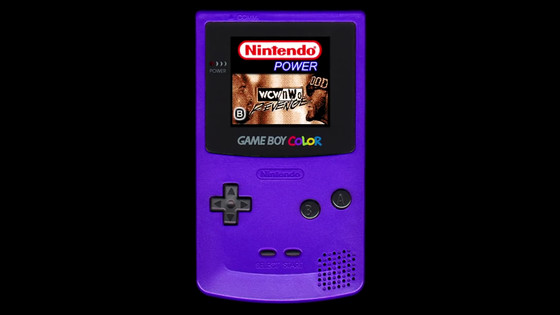
Communication is not wired, but wireless communication with the wireless modem built into the Page Boy main unit, and by using preset fonts and animations, data usage is minimized and reading speed is increased, and per minute It was supposed to be able to send and receive about 400 characters. In addition, he had the idea of sending a selfie photo to the other party in combination with a
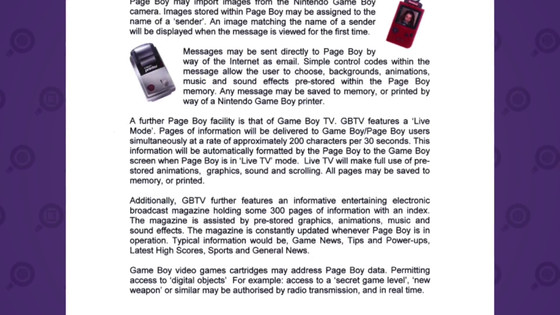
Of course, it was planned that the functions that were installed in WorkBoy, such as the clock function and calendar function, would be further enhanced and installed in Page Boy.
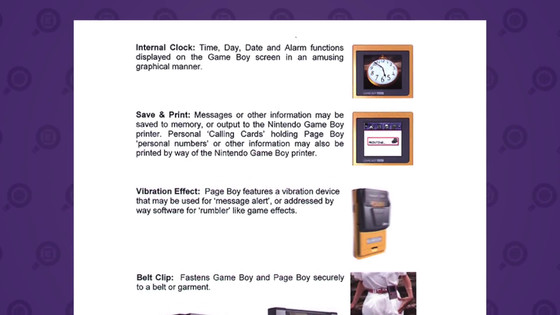
Also, to realize these ideas, Page Boy was planned to be a fairly large peripheral that could be plugged into a Game Boy Color cassette slot.

There is a clip on the back side of the Page Boy body, and it is also unique that you can hang the Game Boy Color on your waist.
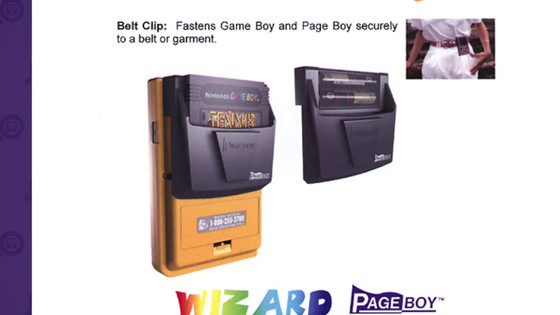

Page Boy was developed over a three-year period from 1999 to 2002. Initially it was a very attractive project, but as development progressed, it became clear that this idea could only be realized in a limited market such as the United States. DidYouKnowGaming? Reported that the Nintendo headquarters in Japan was reluctant to use Page Boy because it recognized that its availability around the world was the core of the appeal of the Game Boy Color device.
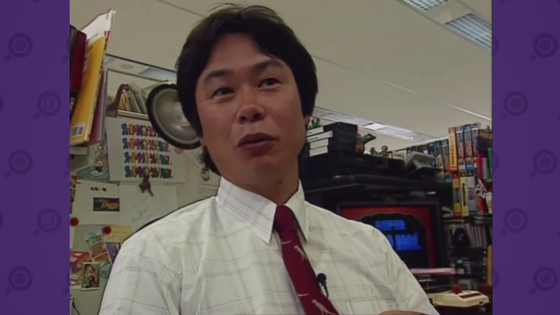
As a result, Page Boy was discontinued around July 2002. However, the idea of distributing various information to the game console itself
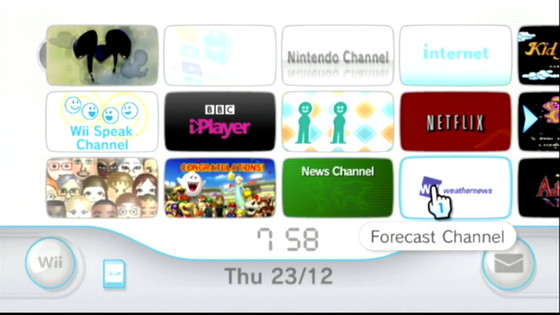
In 2001, just before the development of Page Boy was completed, the ' Mobile Adapter GB ' was released in Japan, which enables communication by connecting a mobile phone or PHS terminal to Game Boy Color. By using the mobile adapter GB, it became possible to access the Nintendo mobile version homepage from Game Boy Color, and with some software it was also possible to communicate with friends.
Related Posts:







